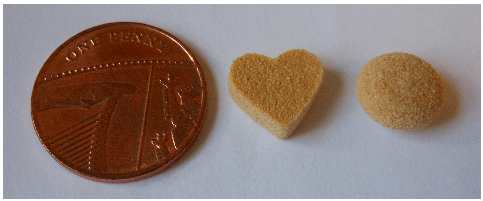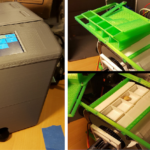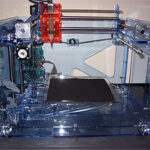

3D printed pills are still something that make a lot of people raise their eyebrows; compared to other medical applications, they’re not quite as common or well-known yet. There are plenty of reasons why 3D printing medications is a great idea, however. The technology can create personalized pills, with the exact dosage of every medication a patient needs built right into a single tablet. In addition, 3D printing can create things like special fast-dissolving pills for people who have difficulty swallowing regular pills, and others that control active ingredient release timing. Benefits like these can increase patient compliance by eliminating all difficulty in taking medications, and thus lead to better health.
Put like that, 3D printed medications would seem like a no-brainer, though there are still only a few companies pursuing the technology at the moment. One of those companies is FabRx, a spinoff of University College London’s School of Pharmacy. FabRx is the creator of Printlets, 3D printed tablets with customized dosages of medication. The company had been 3D printing its pills using three technologies: FDM, SLA, and gel/paste extrusion. SLA, however, hasn’t been a viable means of production yet as the materials used in the technology are not GRAS (Generally Recognized As Safe) approved by the FDA.
Now FabRx has started creating its tablets with Selective Laser Sintering, or SLS, technology as well. In a study entitled “Selective laser sintering (SLS) 3D printing of medicines,” which you can access here, the FabRx team describes how they mixed acetaminophen with two pharmaceutical-grade polymers, one with immediate release and one with modified release characteristics. The powders were 3D printed into tablet form using a Sintratec 3D printer.
“In FabRx we are developing business opportunities for the technologies we know, but innovation is a must, we are a research driven company. We wanted to evaluate other 3DP technologies that could work to print medicines. SLS was potentially the best one, because we could use pharmaceutical grade excipients as ink and get the medicine prepared fast by the effect of the laser,” Dr. Alvaro Goyanes Goyanes, FabRX Director of Development, told 3DPrint.com.

“At the beginning, we had no access to SLS printers, and the SLS equipment was very expensive (there were only industrial SLS printers). We did not want to invest a huge amount of money in an equipment that we did not know if it was going to work for printing medicines. Later, we found the Sintratec printer that had the same cost of a high end FDM printer and decided to buy one. We were surprised how easy was to print tablets using pharmaceutical grade polymers (improvement compared to SLA) without the need to get an extruded filament (previous step in FDM). It works better than we expected for such a cheap kit, we recently bought another printer. We are evaluating different excipients and drugs.”
FabRx found that the medications it printed using SLS technology were high resolution and had no drug degradation. The technology makes it possible to 3D print almost any combination of drugs in a variety of shapes, sizes, colors and flavors to make them more appealing to patients, particularly children and the elderly. The Printlets were tested for their drug release capabilities in a Dynamic Dissolution model that modulates pH over time, simulating gastrointestinal conditions. Depending on which excipients are used, the Printlets can be formulated to be immediate release or delayed release.
The efficacy of SLS for 3D printing medications is an exciting discovery for FabRx, but the company isn’t stopping there. Future plans include experimentation with other 3D printing methods, Dr. Goyanes told us, as well as the development of their own 3D printer.
“SLS is only one of our lines of research and work, but we are evaluating and developing all the technologies together,” he told 3DPrint.com. “We are going to start a crowdfunding campaign next month to take to the market a 3D printer specially designed to print oral medicines, because there is no printer specially designed for medicines.”
Authors of the study include Fabrizio Fina, Alvaro Goyanes, Simon Gaisford, and Abdul W. Basit. Discuss in the FabRx forum at 3DPB.com.
When it comes to 3D real estate visualization in the USA, our service provides the perfect solution for bringing property listings to life. Through our platform, you can easily access cutting-edge 3D renderings that showcase your real estate projects in a way that attracts potential buyers and investors. Whether it's residential, commercial, or mixed-use properties, our team of experts uses advanced technology to create immersive visualizations that highlight the best features of your property, making it easier for clients to imagine the space as their own.
Through our website, you can quickly get high-quality 3D real estate visualizations that are tailored to your specific needs. With our help, you'll stand out in the competitive real estate market by offering potential buyers a realistic, interactive view of your property. Our efficient process ensures a fast turnaround time, while our attention to detail guarantees that every aspect of the property is represented accurately, giving you a powerful marketing tool to promote your real estate listings.






